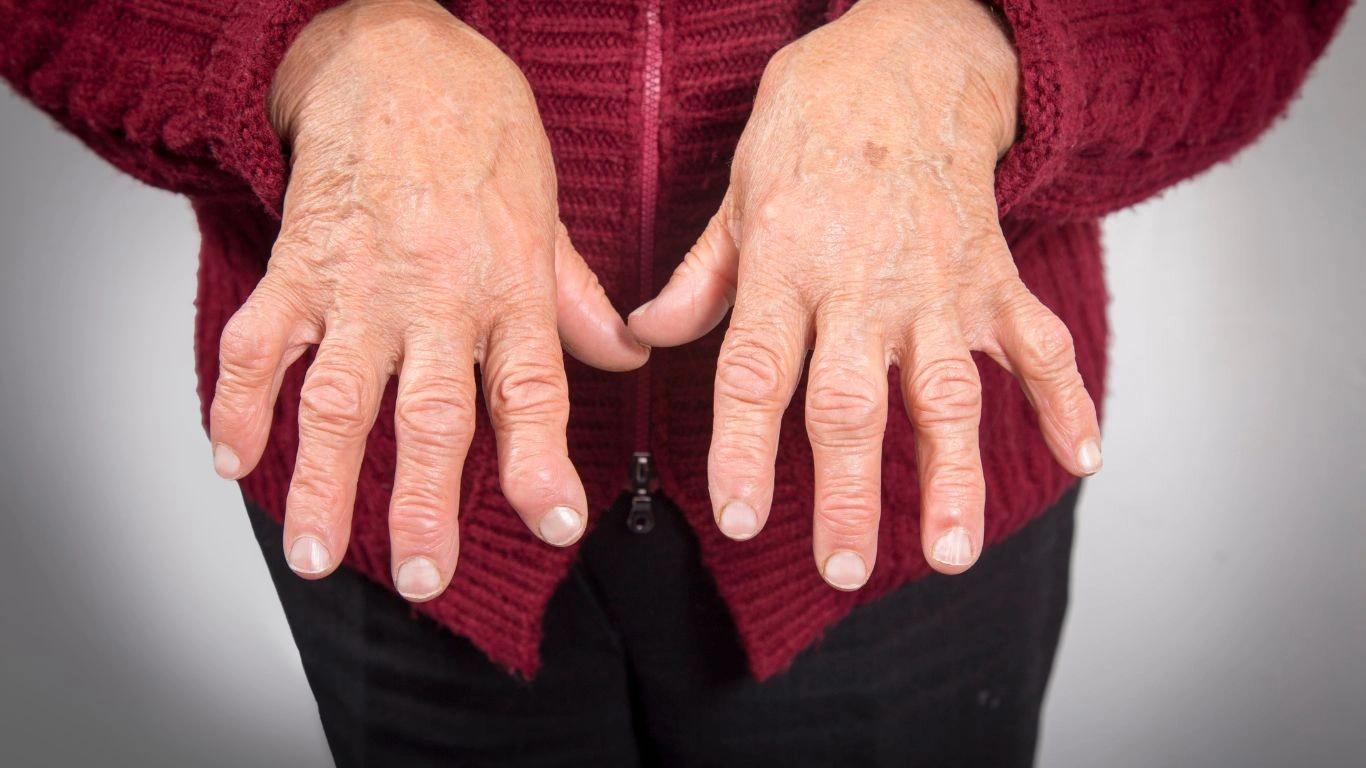Rheumatoid Arthritis & Chronic Pain: Breakthrough Treatments for Relief
Rheumatoid arthritis (RA) and its connection to chronic pain is something I’ve seen firsthand—both in my patients and in my own journey as a specialist. If you’re living with RA, you already know that it’s more than just joint pain. It’s a relentless, often unpredictable condition that can disrupt every part of your life. From stiff mornings to sudden flare-ups that seem to come out of nowhere, the pain feels like an unwelcome companion. But here’s the thing—understanding how RA causes chronic pain is the first step to taking control. So, let’s break it down together.
What Makes Rheumatoid Arthritis So Painful?

Rheumatoid arthritis isn’t just about joints—it’s an autoimmune disease. That means your body’s defense system, which should be protecting you, mistakenly attacks your own tissues. The result? Inflammation, swelling, and yes, chronic pain.
1. Inflammation and Joint Damage
In RA, the immune system targets the synovium, the soft tissue that lines the joints. When this happens, inflammation sets in, thickening the lining and causing fluid buildup. This pressure inside the joints leads to persistent pain. Over time, if left unchecked, the damage can become permanent, leading to joint deformities and mobility issues.
2. Nerve Irritation
Chronic inflammation doesn’t just affect joints—it also impacts the nerves around them. When your nerves are constantly irritated, they send pain signals to your brain, even when you’re at rest. This explains why RA pain doesn’t always match up with movement. Sometimes, even the simplest tasks—like buttoning a shirt—feel impossible.
3. The Pain-Brain Connection
Here’s where it gets even more complex. RA pain isn’t just physical—it messes with your nervous system. Over time, your brain becomes hypersensitive to pain signals, making discomfort feel even worse. This is why people with RA often experience central sensitization, where the brain amplifies pain even when inflammation isn’t at its peak.
How Chronic Pain in RA Affects Daily Life

If you’re living with RA, you know that the pain isn’t just an occasional inconvenience—it’s a daily reality. And it doesn’t just affect your joints. The impact of chronic pain extends far beyond physical discomfort.
1. Sleep Struggles
Pain and sleep have a complicated relationship. RA makes it hard to get comfortable at night, and poor sleep only makes pain worse the next day. It’s a frustrating cycle that can leave you feeling exhausted before the day even begins.
2. Emotional Toll
Chronic pain doesn’t just wear down your body—it affects your mental well-being too. Anxiety, depression, and frustration are common among RA patients. It’s hard to stay positive when pain is a constant presence. But acknowledging this emotional aspect is important because mental health plays a key role in pain perception.
3. Everyday Tasks Become Challenges
Simple activities—like opening jars, getting dressed, or even holding a coffee cup—can feel like monumental tasks. This isn’t just frustrating; it can be deeply isolating. Many people with RA struggle with the loss of independence, which can take a serious toll on self-esteem.
Why RA Pain Feels Different Than Other Types of Arthritis

One of the most common questions I get from people newly diagnosed with RA is: “How is this different from osteoarthritis?” It’s a great question because the pain patterns are completely different.
1. RA Pain is Systemic
Osteoarthritis (OA) is mechanical—it happens due to wear and tear on the joints over time. But RA? It’s systemic, meaning it can affect multiple joints at once. If you wake up with stiffness in both hands, knees, or feet, that’s a telltale sign of RA rather than OA.
2. Morning Stiffness Lasts Longer
With RA, morning stiffness can last hours. In OA, it usually eases up within 30 minutes. That lingering, aching sensation is due to ongoing inflammation rather than just joint degeneration.
3. Flares are Unpredictable
Unlike OA, which tends to worsen gradually, RA flares come and go unpredictably. One day, you might feel okay; the next, you’re hit with an intense wave of pain, swelling, and fatigue that makes everything harder.
Managing Chronic Pain in Rheumatoid Arthritis

Now that we understand why rheumatoid arthritis (RA) pain is so persistent, let’s talk about what we can actually do about it. Because here’s the truth—while there’s no cure for RA, there are ways to manage the pain and reclaim control over your life. And trust me, I’ve seen these strategies work wonders for my patients.
1. Medications That Help
There’s no magic pill that makes RA pain disappear, but the right medications can make a world of difference. Depending on your symptoms, your doctor may recommend:
- DMARDs (Disease-Modifying Antirheumatic Drugs) – These slow down RA progression and help reduce inflammation.
- Biologics – Targeted therapies that block specific parts of the immune system to prevent joint damage.
- NSAIDs and Steroids – Used for short-term pain relief during flares.
One thing I always tell my patients—don’t just suffer in silence. If your meds aren’t working or the side effects are too much, talk to your doctor. RA treatment isn’t one-size-fits-all.
2. Movement is Medicine
When you’re in pain, the last thing you want to do is move. But here’s the catch—staying still actually makes RA pain worse. Gentle movement keeps your joints from stiffening up and helps reduce long-term damage.
Some of the best exercises for RA include:
- Low-impact cardio – Swimming, walking, or cycling can keep you active without stressing your joints.
- Stretching – Keeps joints flexible and reduces stiffness.
- Strength training – Helps support the joints by strengthening surrounding muscles.
I’ve had patients tell me they were afraid to exercise because they thought it would make things worse. But with the right approach, movement can be a game-changer.
Diet and Nutrition: Can Food Help with RA Pain?

What you eat might not be the first thing you think of when managing RA pain, but trust me—diet plays a bigger role than most people realize. Inflammation is at the heart of RA, and certain foods can either fuel or fight that inflammation.
1. Anti-Inflammatory Foods
Some foods help calm down inflammation naturally. If you’re looking to support your RA management with nutrition, consider adding:
- Fatty fish (salmon, sardines) – Rich in omega-3s, which have powerful anti-inflammatory properties.
- Fruits and vegetables – Packed with antioxidants that fight inflammation.
- Olive oil – A great source of healthy fats that can reduce joint pain.
- Turmeric – Contains curcumin, known for its anti-inflammatory benefits.
I’ve had patients tell me that simply cutting out processed foods and adding more whole, anti-inflammatory ingredients made a huge difference in their daily pain levels.
2. Foods That Make RA Worse
On the flip side, some foods can trigger inflammation and make symptoms worse. You might want to limit:
- Processed sugars – Can increase inflammation and worsen joint pain.
- Red meat – Some people find that it triggers flares.
- Dairy – A common sensitivity for people with autoimmune conditions.
- Highly processed foods – Often loaded with additives that may contribute to inflammation.
If you suspect food is affecting your symptoms, try keeping a food journal to track potential triggers.
Mind-Body Approaches for RA Pain

RA pain isn’t just physical—it takes a toll on your mental well-being too. That’s why mind-body approaches can be incredibly powerful in managing pain. When your stress levels are high, your body produces more inflammatory chemicals, which can make RA symptoms even worse.
1. Stress Management Techniques
Finding ways to reduce stress is essential for keeping RA pain in check. Some strategies that work include:
- Meditation – Helps calm the nervous system and reduce pain perception.
- Deep breathing exercises – Can ease tension and improve relaxation.
- Yoga – Combines gentle movement with breathwork to help reduce stiffness and stress.
Even just a few minutes of mindfulness a day can make a noticeable difference in how you feel.
2. Sleep Hygiene
We already touched on how RA can mess with sleep, but improving your sleep habits can help break the cycle of pain and exhaustion. Try:
- Keeping a consistent bedtime routine.
- Using a supportive mattress and pillows.
- Avoiding screens before bed to help with melatonin production.
Better sleep often means better pain management, so don’t underestimate its importance.
Support Systems: You Don’t Have to Do This Alone
One of the most challenging parts of living with RA is that it can feel isolating. But the truth is, you’re not alone. Building a support system—whether it’s friends, family, or an online RA community—can make a huge difference in how you cope.
1. Finding a Support Group
Talking to others who understand what you’re going through can be incredibly validating. Whether it’s a local group or an online forum, connecting with people who “get it” helps reduce feelings of isolation.
2. Educating Loved Ones
Sometimes, people in our lives don’t understand just how much RA affects us. Educating them—whether through conversations, articles, or bringing them to doctor’s appointments—can help them better support you.
At the end of the day, managing RA is about finding what works for you. What helps one person might not work for another, and that’s okay. The key is to stay informed, be proactive, and give yourself grace on the hard days.
Emerging Treatments and Future Hope for RA Pain

One of the most exciting things about being in the rheumatology field is witnessing the advancements in rheumatoid arthritis (RA) treatment. When I first started working with RA patients, treatment options were much more limited. Today, thanks to ongoing research, there’s real hope for better pain relief and even potential remission.
1. Cutting-Edge Biologic Therapies
Biologic drugs have already changed the game for many RA patients, but researchers are continually working on newer, more targeted therapies. These medications work by blocking specific immune system signals that cause inflammation. Some of the latest advancements include:
- JAK inhibitors – A newer class of medications that target inflammatory pathways differently than traditional biologics.
- B-cell therapies – Designed to slow down overactive immune responses.
- Personalized medicine – Future treatments may be tailored based on individual genetic markers.
What does this mean for you? It means that even if your current treatment isn’t giving you full relief, new options are emerging all the time.
2. Regenerative Medicine
Another fascinating area of research is regenerative medicine, including stem cell therapy. Scientists are exploring whether stem cells can help repair joint damage caused by RA. While this treatment isn’t widely available yet, it’s something to keep an eye on.
3. Lifestyle-Based Clinical Studies
More research is also being done on the effects of lifestyle changes in managing RA pain. Studies have shown promising results for:
- Gut health and the microbiome – Researchers are investigating how gut bacteria influence inflammation.
- Fasting and diet interventions – Some studies suggest intermittent fasting may help reduce RA symptoms.
- Alternative therapies – Acupuncture, CBD oil, and heat therapy are gaining more scientific attention.
While these approaches aren’t replacements for medication, they can complement traditional treatments for better overall pain management.
How to Advocate for Yourself in RA Treatment

One of the most important things I’ve learned from working with RA patients is that self-advocacy matters. RA is a complex condition, and not all doctors approach it the same way. If you’re struggling with chronic pain, don’t hesitate to push for the care you deserve.
1. Communicate Clearly with Your Doctor
Your doctor needs to know exactly how RA pain is affecting your daily life. Instead of just saying, “I’m in pain,” try describing:
- Where the pain is most intense.
- What times of day it worsens.
- Which activities are most difficult.
- How it impacts your mood and sleep.
Keeping a symptom journal can help you track patterns and provide specific details during appointments.
2. Don’t Be Afraid to Seek a Second Opinion
If your current treatment isn’t working, it might be time to see a different specialist. Rheumatologists have different approaches, and sometimes a fresh perspective can lead to better results.
3. Educate Yourself and Stay Informed
RA research is constantly evolving, and staying informed helps you make the best decisions about your care. Reputable sources like the Arthritis Foundation and American College of Rheumatology provide up-to-date information on treatments and research.
Final Thoughts: You Are More Than Your Pain
Living with rheumatoid arthritis and its connection to chronic pain is a journey, and it’s not always easy. Some days will be better than others, and that’s okay. The key is to find what works for you—whether it’s the right medication, movement, diet, or stress management strategies.
Most importantly, remember that RA does not define you. You are not just a patient; you are a person with a full life, goals, and passions beyond your diagnosis. Keep advocating for yourself, stay connected to support networks, and never lose hope—because breakthroughs are happening every day.
References
- Arthritis Foundation
- American College of Rheumatology
- National Center for Biotechnology Information (NCBI)
Disclaimer
This article is for informational purposes only and should not be considered medical advice. Always consult with a healthcare professional before making changes to your treatment plan.

Tarra Nugroho is a dedicated Nurse Practitioner with a strong foundation in family and preventive care. She brings both compassion and clinical expertise to her practice, focusing on patient-centered care and health education. As a contributor to Healthusias.com, Tarra translates medical knowledge into clear, empowering articles on topics like women’s health, chronic disease management, and lifestyle medicine. Her mission is simple: help people feel seen, heard, and informed—both in the clinic and through the content she creates. When she’s not caring for patients, Tarra enjoys weekend hikes, plant-based cooking, and curling up with a good health podcast.






